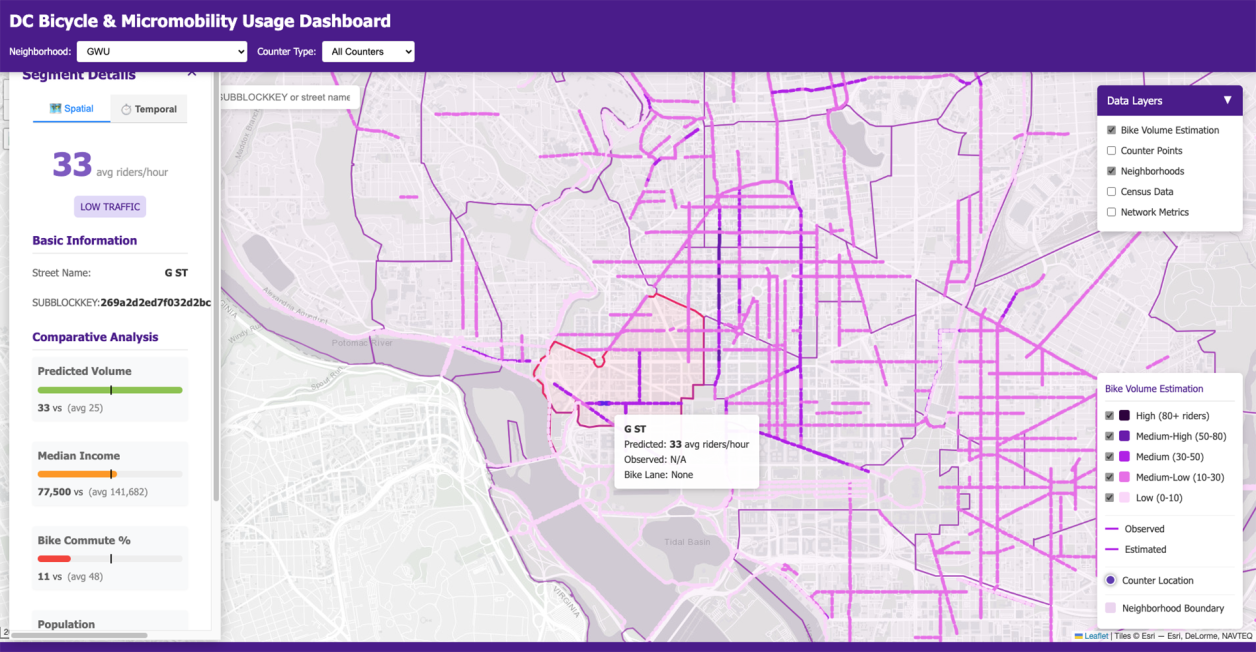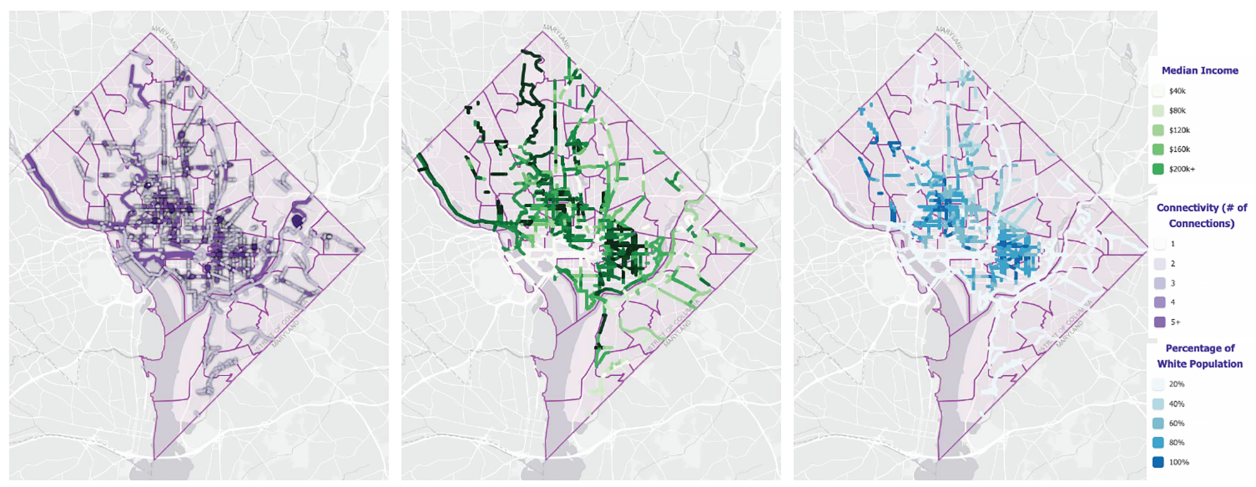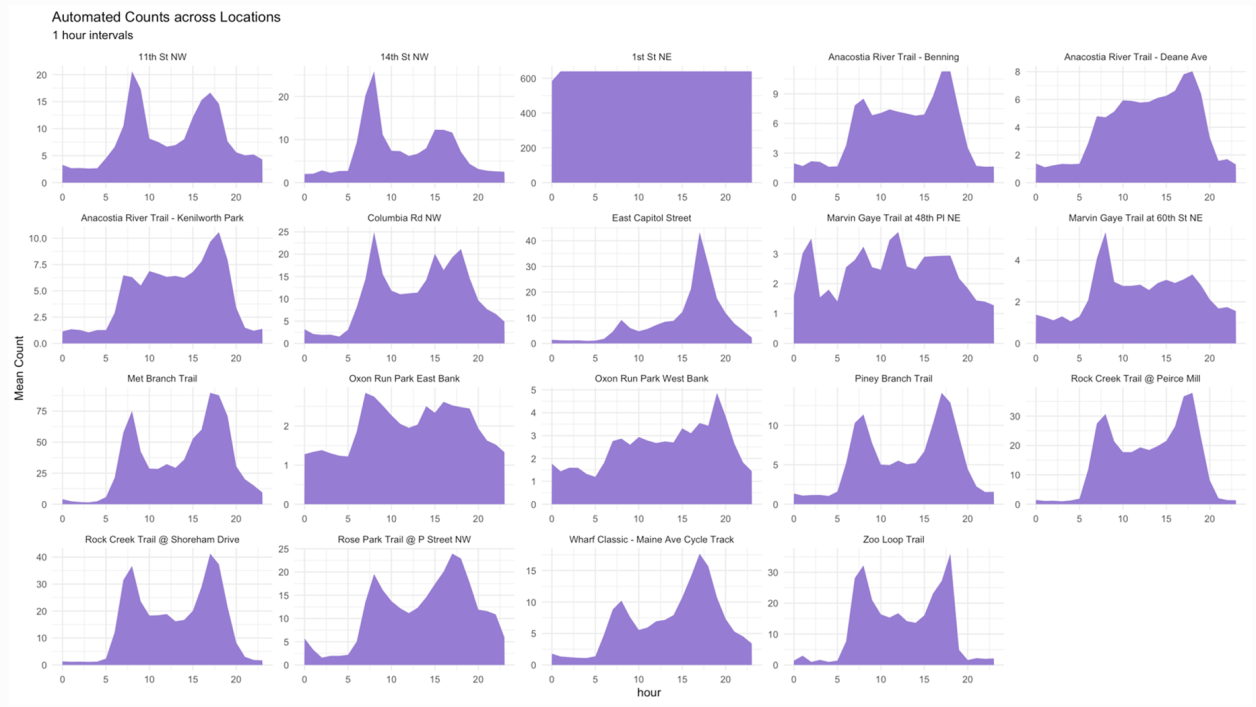Estimate Bike Count in DC
Washington, DC faces challenges in understanding micro-mobility (bicycle and scooter) usage patterns across the city due to limited data collection infrastructure. While DC's bike network is extensive, the current counter system provided an incomplete picture of cycling patterns, with manual counters operating only during peak hours once per year, and automated counters limited to approximately 30 locations with poor spatial distribution across the city.
The collected data from both counter systems offered valuable but fragmented insights into ridership patterns. The primary question posed by this project is: How can we estimate micro-mobility ridership volumes across the entire DC network despite limited spatial and temporal counter coverage? The absence of comprehensive data makes it difficult for DDOT to fully understand cycling patterns, optimize network planning, and make informed decisions about infrastructure provision and interventions.
Our proposed solution involves a two-stage modeling approach that maximizes information from both data sources. First, a spatial model uses manual counts with spatial predictors to estimate peak-hour patterns. These spatial predictors include socio-demographic factors, network characteristics, infrastructure features, land use variables, and etc. Second, a temporal model incorporates automated counter data and peak-hour estimates to model hourly traffic throughout the day. This is delivered through an interactive dashboard that visualizes predicted bicycle volumes at the street-segment level throughout Washington, DC.
The project aims to provide DDOT planners and policymakers with a data-driven approach to estimate bicycle and scooter usage across the entire network, thereby improving their understanding of cycling mobility flows, supporting better infrastructure decisions, and enhancing analysis of relationships between ridership patterns and demographic factors in Washington, DC.
Learn More





